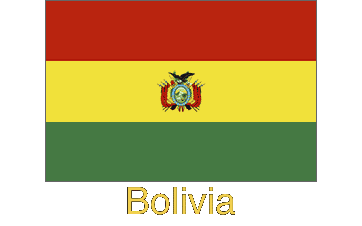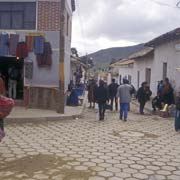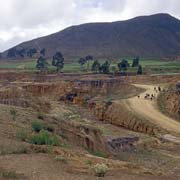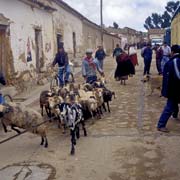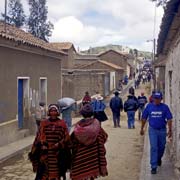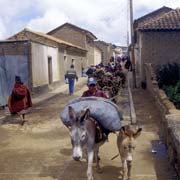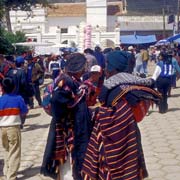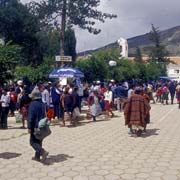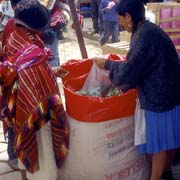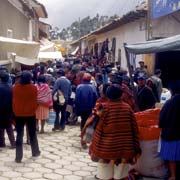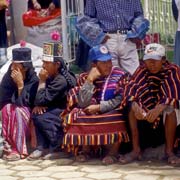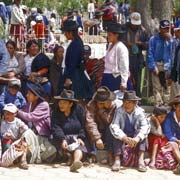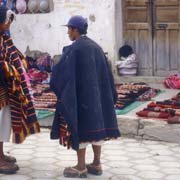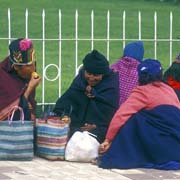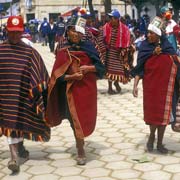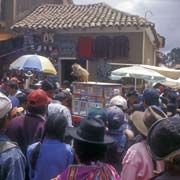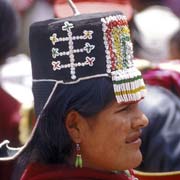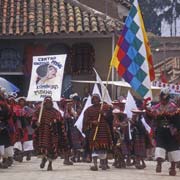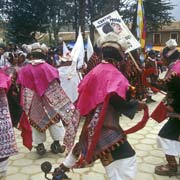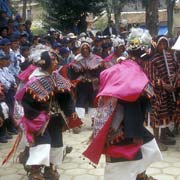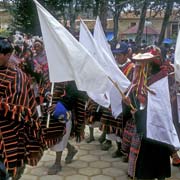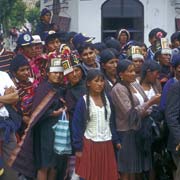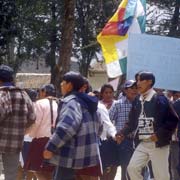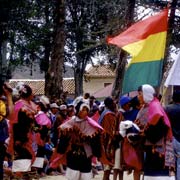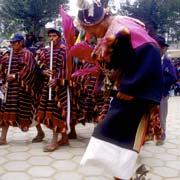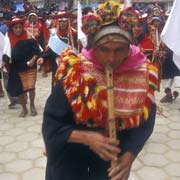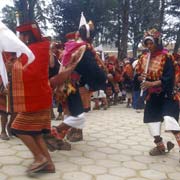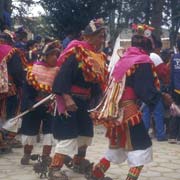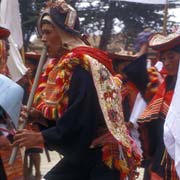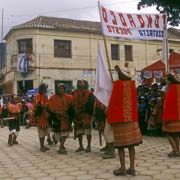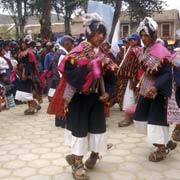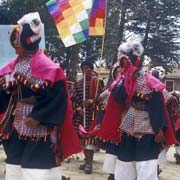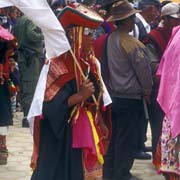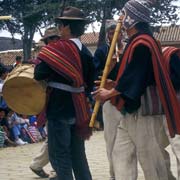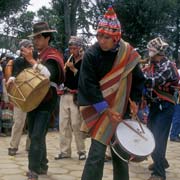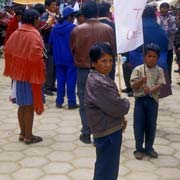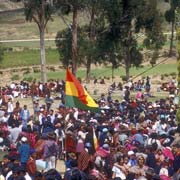Photos of Tarabuco, the home of Yampara culture and Pujllay, Bolivia
Tarabuco, the home of Yampara culture and Pujllay
Tarabuco is a small Indian town about 65 kilometres east of Sucre and best known as the home of the traditional “Yampara” culture. There is a very colourful Sunday Market, where, among others, beautiful handmade weavings and “charangos” (small stringed instruments with the shell of the back of an armadillo on the back) are for sale. Many people wear their traditional Yampara costumes, which preserves their identity and advertises their location of origin to others within the Tarabuco area.
you may then send it as a postcard if you wish.
Each March, the people of Tarabuco host the Pujllay festival, a great celebration with many colourful traditional costumes and dances. Pujllay (or Pukllay) means “play” in the Quechua language (the language of the Incas!) and is the name of a traditional festival held on various sites in the central Andes. The Bolivian Pujllay is also connected to the Christian Carnival, and the celebration of a battle won over the Spaniards - hence the headdress resembling Spanish helmets and “gallu-gallu”, jangling spurs that the men, dressed in their colourful “Yampara” costumes, wear in the dance.
There are groups from different villages in the district, carrying banners identifying their origin. They often fly the “Whipala” (the square Inca rainbow flag) of Qulla Suyu (or Collasuyu); this was the southeastern provincial region of the Inca Empire, which incorporated the Aymara territories that are now part of Bolivia. The Whipala functions as the dual flag of Bolivia along with the red, yellow, and green banner, confirming the Indian identity of the country..


